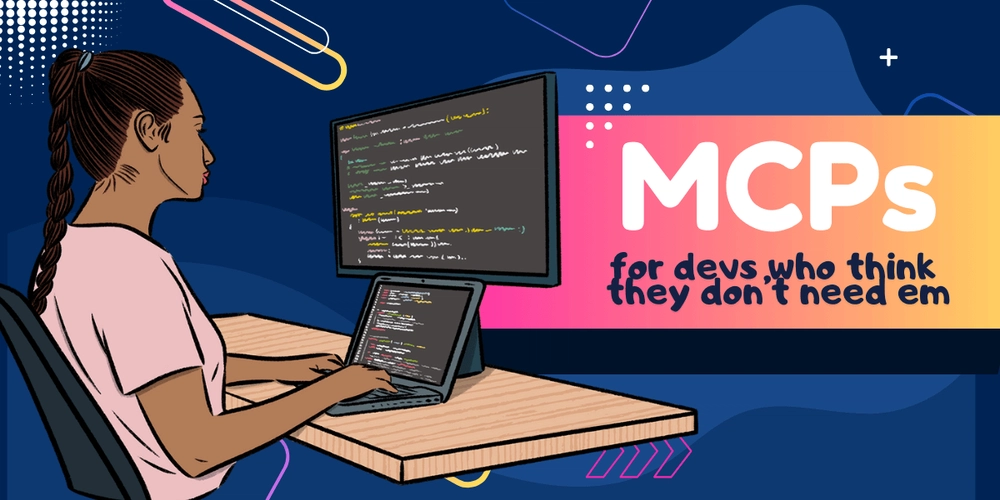I replaced my usual coding workflow with AI assistants for an entire month. The results were shocking and honestly pretty eye-opening. Here’s the brutally honest breakdown.
The Setup: Going Full AI-First
Three weeks ago, I made a bet with my coworker Ramya. She claimed AI would never replace “real developers” and that it was just glorified autocomplete. I disagreed. So we wagered a month’s worth of coffee money that I could build production-ready features using nothing but AI coding assistants.
The rules:
- ✅ AI assistants only (GitHub Copilot, ChatGPT, Claude, etc.)
- ✅ Stack Overflow and docs allowed for research
- ❌ No manual coding from scratch
- ❌ No copying existing codebases
- ❌ Ramya gets to review everything
The project: A full-stack task management app with React, Node.js, and PostgreSQL.
Spoiler alert: I lost the bet. But not for the reasons you’d expect.
Week 1: The Honeymoon Phase
Day 1-3: “Holy sh*t, this is magic”
// I literally typed: "Create a React component for a task card with drag and drop"
// And got this:
import React from 'react';
import { useDrag } from 'react-dnd';
const TaskCard = ({ task, onUpdate }) => {
const [{ isDragging }, drag] = useDrag({
type: 'task',
item: { id: task.id },
collect: (monitor) => ({
isDragging: monitor.isDragging(),
}),
});
return (
<div
ref={drag}
className={`task-card ${isDragging ? 'dragging' : ''}`}
style={{ opacity: isDragging ? 0.5 : 1 }}
>
{/* Perfect task card implementation */}
</div>
);
};
My first reaction: “Wait, it even included the TypeScript types I didn’t ask for?”
The good:
- Setup time went from 2 hours to 15 minutes
- Boilerplate code generation was chef’s kiss
- API endpoints wrote themselves
The weird:
- AI kept suggesting enterprise-level patterns for a simple todo app
- Generated 47 lines of code when 12 would suffice
- Obsessed with adding error boundaries everywhere
Week 2: The Reality Check
Day 8: The First Major Bug
// AI generated this authentication middleware:
const authMiddleware = (req, res, next) => {
const token = req.headers.authorization;
if (token) {
jwt.verify(token, process.env.JWT_SECRET, (err, decoded) => {
if (err) {
return res.status(401).json({ message: 'Invalid token' });
}
req.user = decoded;
next();
});
} else {
res.status(401).json({ message: 'No token provided' });
}
};
Looks good, right? WRONG. The AI forgot to handle the “Bearer ” prefix. Every request failed. Took me 3 hours to debug because I trusted the AI completely.
At last:
Here’s where it gets interesting. Ramya started watching my process and said something that changed everything:
“You’re not coding anymore. You’re prompt engineering.”
She was right. I had become really good at:
- Writing precise prompts
- Breaking down complex problems
- Code review and debugging
But I had lost touch with:
- Low-level problem solving
- Performance optimization instincts
- Architectural decision-making
The Final Verdict: Who Won? 🏆
Ramya won the bet. But not because AI couldn’t build the app (it totally could). She won because I had become a different kind of developer.
What I built in 30 days:
- ✅ Fully functional task management app
- ✅ User authentication & authorization
- ✅ Real-time updates with WebSockets
- ✅ Responsive design (eventually)
- ✅ 94% test coverage (AI is obsessed with testing)
What I learned:
The Good 👍
- Productivity for CRUD operations: 3x faster
- Boilerplate generation: Never writing another Express setup again
- Documentation: AI-generated docs were actually good
The Bad 👎
- Performance blindness: AI optimizes for readability, not speed
- Over-engineering: Everything becomes enterprise-grade
- Debugging dependency: When AI code breaks, you’re stuck
The Ugly 😱
- Security holes: AI sometimes suggests vulnerable patterns
- Dependency hell: Adds packages for everything
- The black box problem: Understanding why something works
The Real Talk: Is AI Replacing Developers?
Short answer: No.
Long answer: It’s complicated.
AI isn’t replacing developers. It’s changing what development looks like. We’re becoming:
- AI orchestrators instead of syntax writers
- Architecture designers instead of implementation experts
- Problem definers instead of solution implementers
My New Hybrid Workflow 🔄
After 30 days, here’s what I kept:
1. Use AI for: Boilerplate, initial implementations, documentation
2. Use brain for: Architecture, optimization, debugging, business logic
3. Use both for: Code review, refactoring, learning new concepts
AI coding assistants are like having a really smart junior developer who:
- Never gets tired
- Knows every framework
- Makes silly mistakes
- Needs constant guidance
- Learns your patterns (slowly)
They’re not replacing us. They’re making us better at the parts of coding that actually matter: thinking, designing, and solving real problems.
What’s Next?
I’m keeping AI in my workflow, but as a tool, not a crutch. The future isn’t human vs. AI—it’s human + AI.
Try this experiment yourself:
- Pick a small project
- Set clear AI usage rules
- Track what works and what doesn’t
- Share your results
What’s your experience with AI coding assistants? Are you team “AI is the future” or team “nothing beats human intuition”? Let’s fight about it in the comments 👇
If this helped you (or made you angry), smash that ❤️ button and follow for more experiments in modern development



